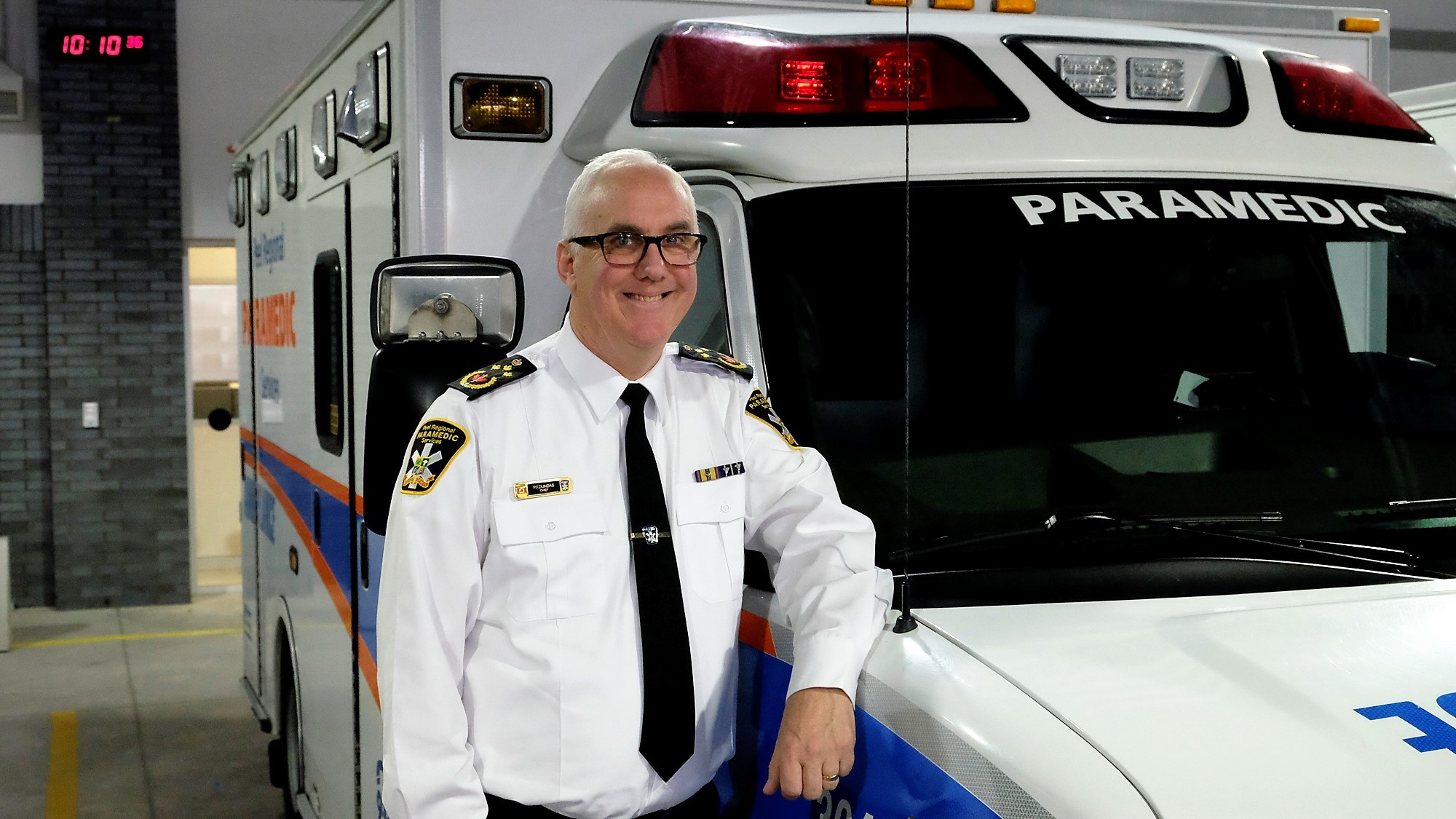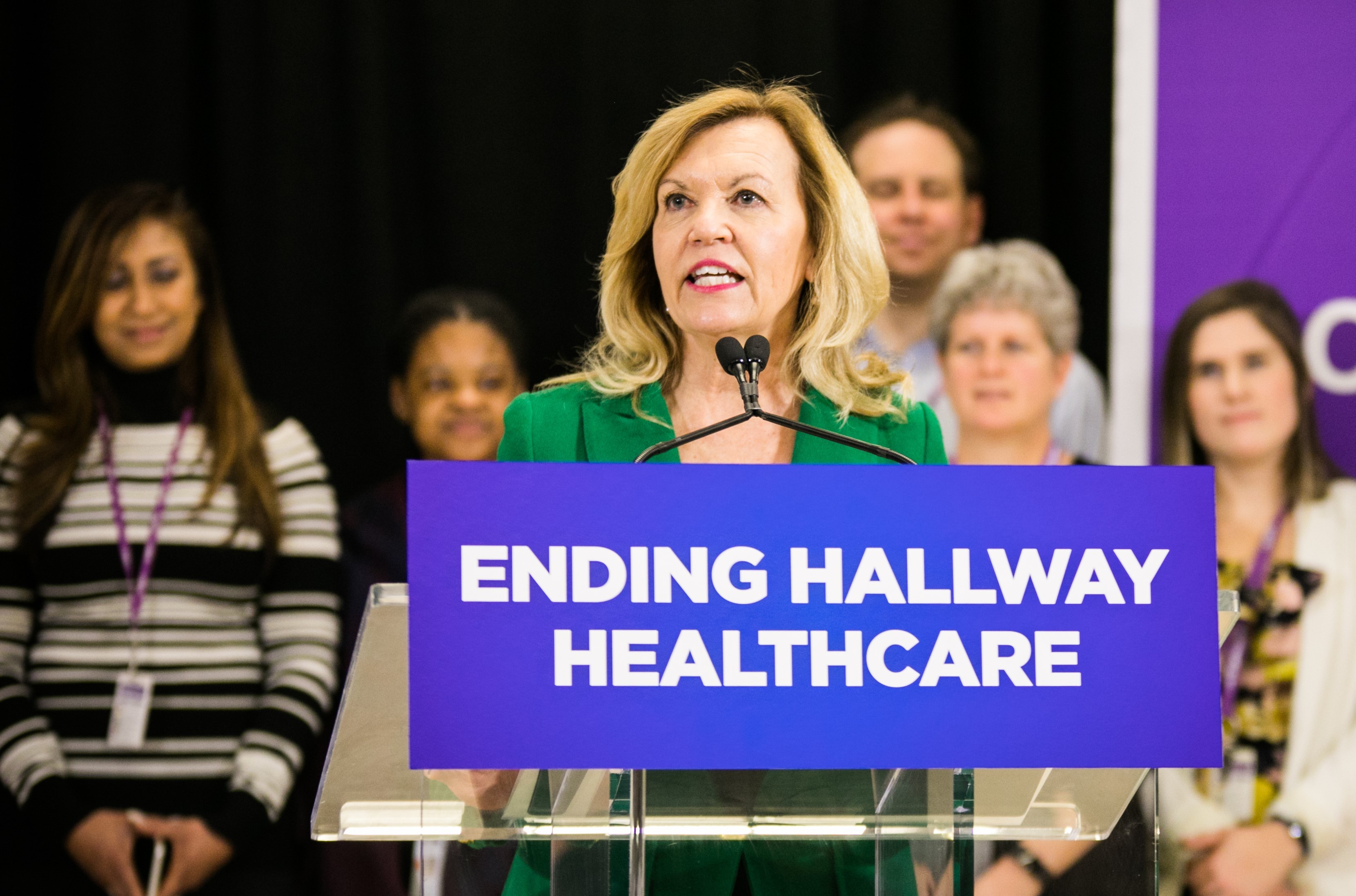
Cutting emergency ambulance centres could lead to U.S.-style ‘Wild West’ privatization, paramedics union warns
Healthcare providers now have one more reason to decry the 2019 provincial budget and its cost-cutting ways. Deep in the weeds of the budget was a vague reference to streamlining “the way land ambulance dispatch services are delivered by better integrating Ontario’s 59 emergency health services operators and 22 dispatch centres.”
Earlier this week, media reports revealed what may be the true meaning of that sentence. The province plans to consolidate Ontario’s 53 regional services into 10 hubs. It is not known how exactly the existing framework would be integrated into the more compact system, and Peel Paramedic Services’ leadership appears to have been caught off-guard about the changes.
“At this point, we do not have confirmation from the province or information about exactly what a new model would look like. For now, we are continuing to provide excellent paramedic services to the residents of Peel and supporting our staff as we await further information from the province,” Peel Paramedic Chief Peter Dundas told The Pointer in an email.

Peel Paramedic Chief Peter Dundas
Premier Doug Ford said at a news conference early in the week that EMS service will not be impacted by the move, adding that nothing has been finalized. He also promised that no frontline workers will be effected and ambulance service will not be reduced. “There’s always going to be the same number of paramedics, that’s a guarantee," Ford said Tuesday.
The Pointer reached out to Health Minister Christine Elliott’s office for comment. None was provided by deadline.
On the ground level, however, a report by Grosso McCarthy Inc. and Bob DeShane & Associates being passed around within paramedic circles may illuminate the rationale for the cuts. Called EMS-Vision 2050, the report recommends creating Ontario EMS Commission Inc., an organization that would be separate from the Ministry of Health and Long-Term Care but would report to the health minister.
“This document, 'EMS VISION – ONTARIO 2019-2050' is the result of an evolving process that we began over two years ago,” says one section of the report. “The foundational work was penned following the completion of the PC Party – Policy Advisory Committee work in 2017.”
Much of the report aligns with the Progressive Conservatives’ moves towards reforming the EMS system. It claims that the “system is not efficient with 53 municipal EMS bureaucracies and 22 communications centres.” Its findings also hope to enable “controlled competitive bidding for Management Contracts of District Operations to qualified EMS providers.”
Under the premiership of Mike Harris, ambulance services were provided through a public-private partnership and direct ministry operations. From 2003 onwards, municipalities almost completely took over staffing and operations of ambulance services, while the province handled district service in remote areas.
“This document, more or less in its entirety, [is] copied from an American model and it recommends, point blank, contracting out EMS services within 36 months. The Conservative government in their official statements have distanced themselves from this document, but they haven’t refuted some of the content in there and certainly have not refuted their desire to amalgamate,” Dan Piquette told The Pointer.
The paramedic unit steward at OPSEU Local 277 said that “in a lot of parts of the United States they operate with privatized ambulance services. One of the bigger entities is AMR, or American Medical Response, and they provide private ambulances.”
Funding for ambulance service has been split 50-50 between the province and municipalities since 1999. The report appears to be advocating for a return to the old public-private partnership system of the Harris days.
The plan provides a timeline by which the recommendation could be implemented. Milestones include forming the commission’s executive, planning districts, enacting supporting legislation (the stage where the transition process appears to be now), assuming operations, consolidating operations within districts and contracting-out services.

Ontario Health Minister Christine Elliott
Much like Elliott’s revelations earlier, it calls for consolidating “the 53 separate ambulance bureaucracies into 10 ‘operations districts’” so as to “cut out redundancy.”
The 10 operations districts could be laid out as follows, according to a provided map:
-
GTA Southwest and Niagara, into which Peel Region would fall
-
GTA Northeast, a patchwork of Kawartha Lakes, Barrie and other areas
-
Toronto
-
Capital region (Ottawa and surrounding areas)
-
Kingston, including Belleville and Brockville
-
London and Central South, stretching from Lake Erie to Lake Huron in Southern Ontario
-
Southwest (Windsor, Chatham, Leamington and surroundings)
-
North Bay and Parry Sound
-
Sudbury and Sault Ste. Marie
-
Thunder Bay and Kenora Northwest
A major factor to consider would be how services would be delivered on the ground, especially in the gargantuan Northern Ontario districts of Sudbury and Sault Ste. Marie and North Bay and Parry Sound.
Administrators could choose a divisional model, where paramedics report to a central division headquarters, gather their trucks and equipment and operate out of a supplementary satellite station in an area. The other option is the stand-alone model, where all operations— including logistics, maintenance and deployment — for the area occur out of one paramedic station.
There appear to be no recommendations on how to deliver boots-on-the-ground service in the report. Geography and distance could become major issues to be addressed.
Dave Wakely, president of OPSEU Local 277, told The Pointer that the proposed changes “[turn] back the clock on ambulance services 30 years. Turning a highly regulated industry into the Wild West with for-profit American [style] ambulance service is dangerous. Mr. Ford owes the people of Ontario more.”
Email: [email protected]
Twitter: @mansoortanweer
Submit a correction about this story


